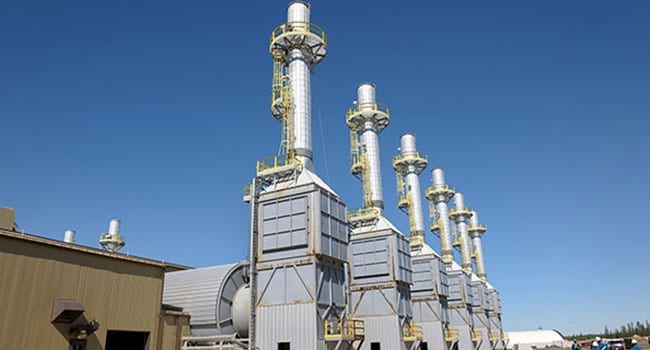Cenovus Energy reported Wednesday full-year 2019 net earnings from continuing operations of about $2.2 billion compared with a net loss from continuing operations of $2.9 billion a year earlier.
In a news release, the company said the year-over-year increase in net earnings was driven by higher operating earnings relative to 2018, non-operating foreign exchange gains of $787 million in 2019 compared with losses of $593 million in 2018 and a deferred income tax recovery in 2019, including $671 million related to the reduction of Alberta’s corporate income tax rate and $387 million due to an internal restructuring of the company’s U.S. operations resulting in an increased tax basis of its U.S. refining assets.
It said it generated free funds flow of $361 million in the fourth quarter and approximately $2.5 billion for the year, reducing net debt by 22 per cent year-over-year and completing construction on its Christina Lake phase G oil sands expansion in March. In the fourth quarter of 2019, Cenovus increased its dividend by 25 per cent and reached full ramp-up of its crude-by-rail shipping capacity, it said.
“We continued to deliver on our commitments to shareholders last year,” said Alex Pourbaix, Cenovus President & Chief Executive Officer, in a statement. “While running safe and reliable operations, we maintained our industry-leading low cost structure, exercised capital discipline and enhanced shareholder value. And through increased rail capacity, we further improved our market access position, providing greater exposure to global oil pricing.”
In 2019, Cenovus said it increased cash from operating activities to approximately $3.3 billion from $2.2 billion the previous year and adjusted funds flow to about $3.7 billion from $1.7 billion in 2018. Cenovus had free funds flow of approximately $2.5 billion in 2019, an eight-fold increase from a year earlier, driven by higher adjusted funds flow and “disciplined” capital spending. Fourth-quarter free funds flow was $361 million compared with a shortfall of $312 million in the same period of 2018.
The company said its full-year upstream results benefited from a 52 per cent narrowing of the differential between West Texas Intermediate (WTI) and Western Canadian Select (WCS) crude oil prices in 2019 compared with 2018 as well as increased sales at locations outside of Alberta, where the company was able to achieve higher realized prices. Refining margins were lower compared with 2018 primarily due to reduced realized crack spreads.
“With our low cost structure, continued focus on capital discipline and our diversified transportation portfolio to get more of our product to U.S. markets, we were able to generate very strong free funds flow in 2019,” said Pourbaix. “And we put that cash to good use, further deleveraging our balance sheet and increasing our dividend in the fourth quarter of the year.”
Cenovus said its 2019 oil sands production averaged 354,257 bbls/d, which was about two per cent lower than in 2018 primarily due to the Government of Alberta’s mandated curtailment program.
“While mandatory curtailment reduced our overall production volumes in 2019, it helped keep light-heavy oil price differentials from reaching the record highs we saw at the end of 2018, contributing to a significant overall benefit for the province and for our industry,” said Pourbaix. “Compared with 2018, our royalty payments to the province of Alberta increased significantly, more than doubling to $1.1 billion in 2019.”
Mario Toneguzzi is a business reporter in Calgary.
![]() The views, opinions and positions expressed by columnists and contributors are the author’s alone. They do not inherently or expressly reflect the views, opinions and/or positions of our publication.
The views, opinions and positions expressed by columnists and contributors are the author’s alone. They do not inherently or expressly reflect the views, opinions and/or positions of our publication.

